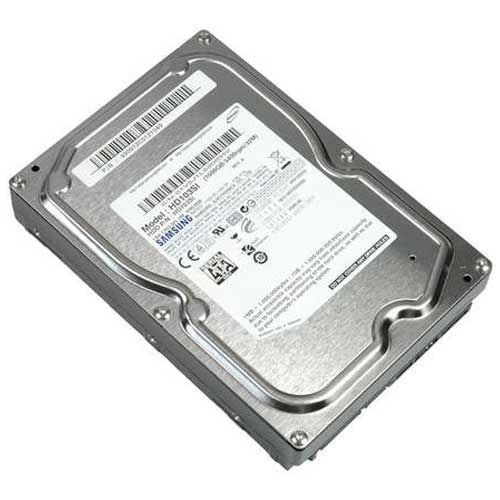Hdd Led 1 103 Serial Number
Contents • • • • • • • Disk interface families [ ] Disk drive interfaces have evolved from simple interfaces requiring complex controllers to attach to a computer into high level interfaces that present a consistent interface to a computer system regardless of the internal technology of the hard disk drive. The following table lists some common HDD interfaces in chronological order: or abbreviation Meaning Description Storage Module Device introduced by CDC Standard interface for many mini-computers in the 1970s and 1980s.
Change the Volume serial number of hard disk drive. Free Publisher: Classic Messenger Downloads: 783. Serial Numbers Personal Edition. Free to try Serial Numbers Personal Edition. Atlas HDD LED.
Shugart Associates System Interface introduced by Shugart Associates circa 1978; Evolved by ANSI into SCSI (SASI is a compatible subset of the first version of SCSI). RLL introduced by Seagate Technology beginning 1980. Standard interfaces for most small HDDs in the 1980s and early 1990s.
Small Computer System Interface sponsored by ANSI and introduced in mid 1980s; Standard interfaces for most enterprise HDDs in this century; superseded by SAS Enhanced Small Disk Interface sponsored by ANSI and first introduced by Maxtor in late 1980s. A higher data rate follow on to the ST-506 family into the mid-1990s, superseded by SCSI (Parallel) AT Attachment introduced in late 1980s by Conner Peripherals and subsequently sponsored by ANSI, Successor to ST-412/506/ESDI. Standard HDD interface on other than enterprise HDDs into this century; superseded by SATA Serial ATA successor to PATA sponsored by ANSI and introduced in 2003. Most common interface for all but enterprise HDDs. Predstavlenie privetstvie zhyuri i zritelej.
Serial Attached SCSI successor to SCSI sponsored by ANSI and introduced in 2004. Most common interface for enterprise HDDs.

Early interfaces [ ]. A data cable (top) and control cable (below) connecting a controller card and an ST-506 HDD. Power cable not shown The earliest hard disk drive (HDD) interfaces were bit serial data interfaces that connected an HDD to a controller with two cables, one for control and one for data. An additional cable was used for power, initially frequently AC but later usually connected directly to a DC power supply unit. The controller provided significant functions such as serial/parallel conversion, data separation, and track formatting, and required matching to the drive (after formatting) in order to assure reliability.
Auto clicker murgee registration key. Each control cable could serve two or more drives, while a dedicated (and smaller) data cable served each drive. • Many early IBM drives, e.g.,, had such an interface. Examples of such early interfaces include: • The interface was popular on minicomputers in the 1970s. • used (Modified Frequency Modulation) for the data encoding method. • ST412, an variant was available in either MFM or (Run Length Limited) encoding variants. • (ESDI) was an industry standard interface similar to ST412 supporting higher data rates between the processor and the disk drive. In bit serial data interfaces the data frequency, data scheme as written to the disk surface and error detection all influenced the design of the supporting controller.
Encoding schemes used included (FM), (MFM) and encoding at frequencies for example ranging from 0.156 MHz (FM on 2311) to 7.5 MHz (RLL on ST412) MHz. Thus each time the internal technology advanced there was a necessary delay as controllers were designed or redesigned to accommodate the advancement; this along with the cost of controller development led to the introduction of.

(ESDI) was an attempt to minimize controller design time by supporting multiple data rates with a standard data encoding scheme; this was usually negotiated automatically by the disk drive and controller; most of the time, however, 15 or 20 megabit ESDI disk drives were not downward compatible (i.e. A 15 or 20 megabit disk drive would not run on a 10 megabit controller). ESDI disk drives typically also had jumpers to set the number of sectors per track and (in some cases) sector size. Word serial interfaces [ ] Historical Word serial interfaces connect a hard disk drive to a bus adapter with one cable for combined data/control. (As for all above, each drive also has an additional power cable, usually direct to the power supply unit.) The earliest versions of these interfaces typically had an 8 bit parallel data transfer to/from the drive, but 16-bit versions became much more common, and there are 32 bit versions. The word nature of data transfer makes the design of a host bus adapter significantly simpler than that of the precursor HDD controller.
• CTL-I (Controller Interface) was an 8-bit word serial interface introduced by IBM for its mainframe hard disk drives beginning with the 3333 in 1972. The 3333 was the first unit in a string of up to eight; it contained a CTL-I controller and two 3330 type disk drives. Subsequently, the first drive (containing a CTL-I controller) in a string of drives was designated by IBM as an A-unit. The drives within an A-unit and all other drives in a string had interfaces similar to the A-units connected to IBM.